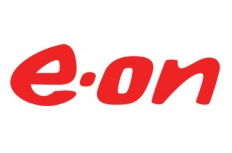The fluctuating feed-in of wind power into the electricity grid has so far been regarded as a problem for grid stability and supply security. E.ON is now turning the tables. E.ON will be one of the first companies to stabilize the German electricity grid with wind power. This is made possible by the integration of a wind farm into E.ON’s Virtual Power Plant.
Previously, only renewable energy from hydroelectric power plants and biogas power plants had contributed to grid stability. With this breakthrough in wind power, E.ON is succeeding in anchoring renewable energy overall as a supporting pillar of grid stabilization.
The company is now planning to continuously increase the share of wind power, which is used for supply security. This makes an important contribution to the success of the energy turnaround. At the same time, EON can also offer its customers who generate renewable energy, the innovative product of control energy, in addition to direct marketing. In doing so, E.ON is using the wind farm in a profitable manner, in order to balance the demand and supply of electricity in the grid. This also provides advantages for the general public: If there is a surplus of electricity, E.ON switches off the wind farm. In this case, the costs are not distributed to the general public in accordance with the Renewable Energies Act levy.
Concretely, E.ON has obtained pre-qualification for a customer wind farm in the Vorpommern-Greifswald administrative district in the federal state of Mecklenburg-Western Pommerania from the transmission system operator, 50Hertz. This is the precondition for being able to participate in the control energy market and has previously only been reserved for generators, who feed in continuously and reliably. In order to achieve this for wind energy, the electricity of the wind farm in Brandenburg is first incorporated by the Virtual Power Plant. In this system, E.ON bundles 3,800 megawatts (MW) generation output from various renewable and industrial sources. This way, sufficient capacity which the grid can access is always available. In a first step, E.ON will provide negative tertiary balancing power in the amount of 26 MW.
It has only been technically possible to participate in the control energy market with energy from wind turbines for just over a year. With the “possible feed-in” procedure, the transmission system operators have set up standardized rules for the first time, which enable the marketing of wind power. The process is now being tested in practice in a two-year pilot phase. E.ON Connecting Energies will be one of the first companies to participate in this pilot phase. As E.ON already successfully offers balancing power from other generation units, the existing infrastructure could be used for the calculation and implementation of this innovative product: The marketing and control of the wind farm will run through E.ON’s Virtual Power Plant and therefore guarantee fault-free and secure operation.
Background to balancing power
Balancing power has the purpose of maintaining grid stability for the transmission network operators. In the electrical power supply system, generation and consumption always need to be balanced in order to maintain the grid frequency of 50Hz. The transmission network operators need balancing power in order to compensate for unforeseen fluctuations in generation and consumption. Positive balancing power is needed if consumption exceeds generation and negative is required in the opposite case.
The transmission network operators have 3 balancing power qualities available, of which one is the tertiary balancing power. This has the purpose of replacing the previously activated secondary balancing power and must be capable of being fully provided within 15 minutes. Since July 2012, the minimum supply size has been 5 MW and it is automatically requested.


